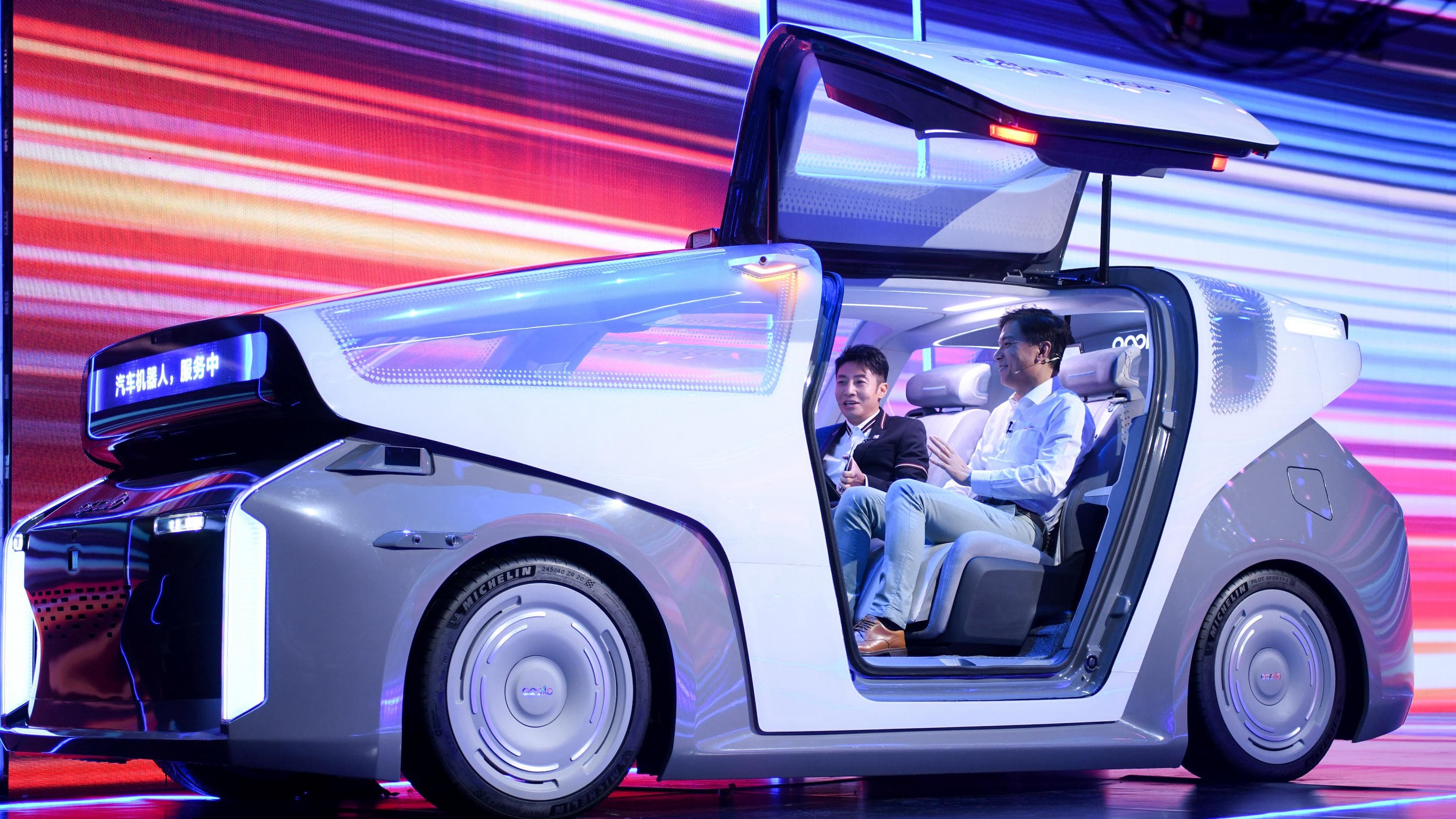
Robin Li (R), Baidu CEO, sits in the Chinese tech giant's new "robocar" prototype, an autonomous vehicle, at the company's annual Baidu World conference on Wednesday, August 18, 2021. /CMG
Robin Li (R), Baidu CEO, sits in the Chinese tech giant's new "robocar" prototype, an autonomous vehicle, at the company's annual Baidu World conference on Wednesday, August 18, 2021. /CMG
Chinese internet search giant Baidu Inc. unveiled on Wednesday its first L5 self-driving robocar prototype with no steering wheel, and an upgraded autonomous driving service platform named Luobo Kuaipao, in a bid to speed up the commercialization of autonomous driving technology.
The future cars will be the robocars, which possess L5 autonomous driving ability, speech and face recognition capacity analyzing the potential needs of users, as well as self-learning and continuous self-improvement abilities, said Robin Li, chairman and CEO of Baidu, at Baidu World 2021.
Autonomous driving is categorized from L1 to L5 – the higher the level, the more intelligent the technology. L5 represents fully autonomous driving.
The robocar subverts the traditional automobile design concept. In terms of appearance, it has automatic gull-wing doors, an all-glass roof and external sensors. There is no steering wheel and pedal in the robocar and it has intelligent configurations such as a large curved screen, intelligent console and zero-gravity seats.
The Beijing-based company has invested heavily in self-driving technology. To date, its robotaxi services have been launched across Changsha, Cangzhou, Beijing and Guangzhou, serving more than 400,000 passengers, with the testing mileage exceeding 14 million kilometers by the end of June.
Baidu has opened its fully driverless robotaxi service to the public in Beijing, where users can hail a robotaxi without a safety driver behind the steering wheel. It also plans to expand its passenger robotaxis to 30 cities across the nation within the next two to three years.
Source(s): China Daily

